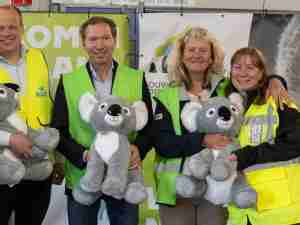Among sectors, the pharmaceutical industry, a major customer for Lufthansa Cargo, will grow around the world in coming years, the cargo unit's management board member Andreas Otto told reporters.
Lufthansa Cargo plans to establish a pharmaceutical transport hub in Hyderabad, India, to help meet demand, he said, adding the business cannot rely on gaining capacity via growth of Lufthansa's passenger airlines because new A380 superjumbos add more seat capacity than room for freight.
Lufthansa's cargo unit transports about half of its freight in the cargo hold of passenger planes.
The Asia-Pacific region accounts for almost half the annual volume of air cargo of about 20 million tons. China and Hong Kong alone contribute almost 4 million tons.
On average, Lufthansa Cargo will need the equivalent of one more MD-11 freighter per year through 2015, Otto said.
Lufthansa Cargo, one of Europe's two biggest air freight carriers along with Air France-KLM , has 18 MD-11 freighters, each with a capacity of just over 90 tons.
Otto said it was not yet clear whether Lufthansa Cargo would buy new planes, convert Lufthansa passenger planes into freighters, or lease capacity.
"We are talking about six MD-11 equivalents. That does not mean that we are buying six more MD-11s. That is something we currently have to work out," he said, adding the carrier would seek approval to add capacity next year.
Otto said he saw supply in the cargo industry falling short of demand by 5 percent by 2014, recovering from overcapacity during the global economic crisis. Air cargo companies were buffeted last year as companies reined in spending to weather the downturn.
Global cargo demand fell by 11 percent in 2009, according to industry body International Air Transport Association (IATA).
IATA said last week that freight traffic, which accounts for 35 percent of the value of goods traded internationally, was now 1 percent above pre-crisis levels of early 2008. (Reuters)










